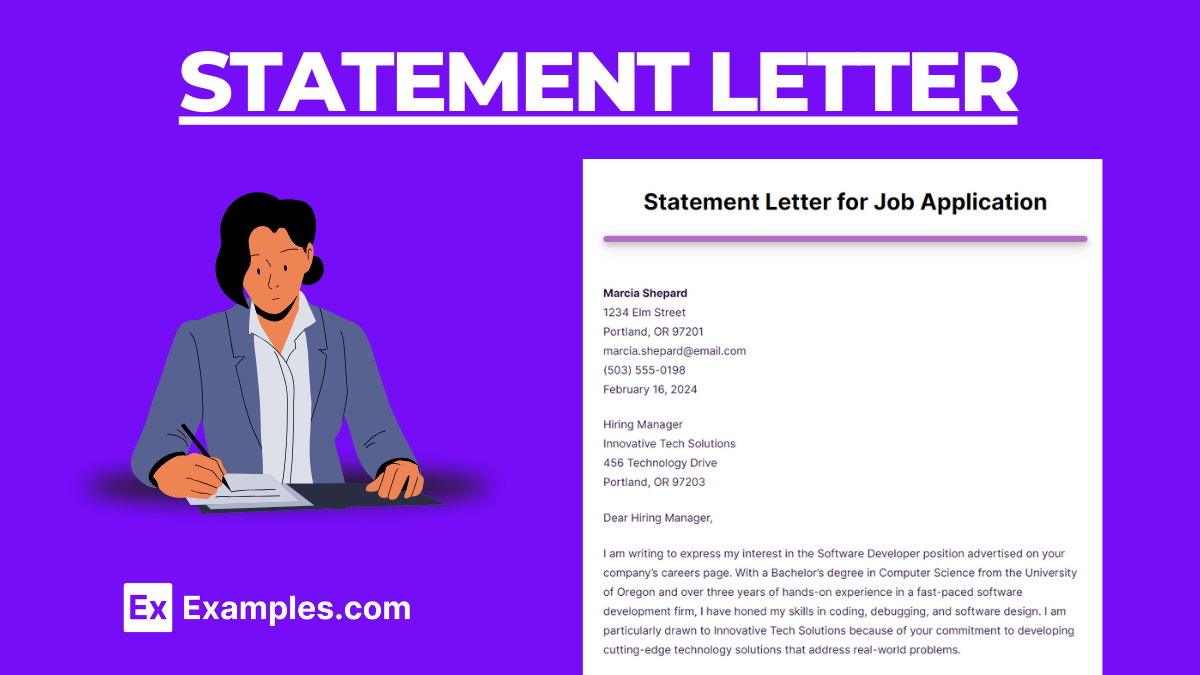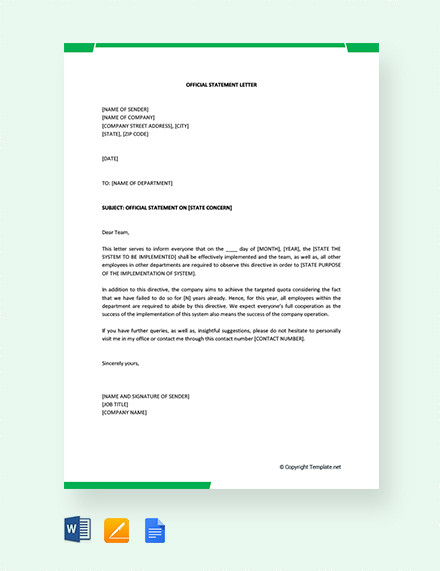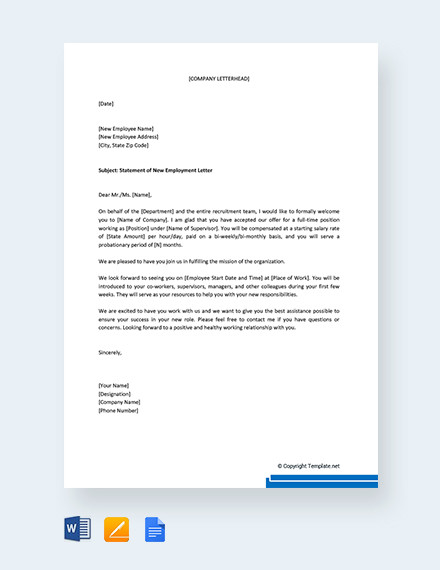20+ Official Statement Letter Examples to Download
In general, letters are convenient and necessary when communicating. Letters effectively express your purpose in a more formal manner than that of a face-to-face conversation. You may think that there is no point in writing letters anymore since you can just call or email your recipient, but letters provide an easy presentation of the topics, even complex ones. Aside from that, they are easier to record and preserve unlike a phone call or a personal conversation. With this in mind, you may now understand why written communication is still prevalent in business and formal settings.
What is Statement Letter?
A statement letter, often referred to as a letter of statement, is a document that provides a clear and concise description of a particular situation or a set of facts. It’s used in various contexts, such as business, legal, financial, or personal matters, to formally declare or explain specific details or circumstances. The primary purpose of a statement letter is to communicate information in a formal, written format, ensuring that the recipient understands the sender’s position, intentions, or actions regarding a specific issue.
Key Characteristics of a Statement Letter
- Clarity and Conciseness: The letter should clearly and directly convey the necessary information without unnecessary details.
- Formal Tone: It typically adopts a formal tone, appropriate to the context in which it is being used.
- Specific Purpose: It is written with a specific purpose in mind, such as explaining a transaction, declaring an intention, or providing an official account of events.
- Factual: The content should be factual and, where appropriate, supported by evidence.
- Signed and Dated: To attest to the authenticity and timeliness of the information provided.
Format of Statement Letter
A statement letter is a formal document that communicates specific information, intentions, or circumstances. It’s structured to ensure clarity and professionalism. Here’s a general format for writing a statement letter:
Heading
Start with your contact information, followed by the date and the recipient’s contact details.
[Your Name]
[Your Address]
[City, State, ZIP Code]
[Email Address] (optional)
[Phone Number] (optional)
[Date][Recipient’s Name]
[Recipient’s Title/Position]
[Company/Organization Name]
[Address]
[City, State, ZIP Code]
Salutation
If you know the recipient’s name, use it with a formal greeting. If not, “Dear Sir/Madam,” or “To Whom It May Concern,” are acceptable.
Dear [Recipient’s Name],
Introduction
Briefly introduce yourself (if necessary) and state the purpose of the letter. Be clear and to the point.
I am writing to [briefly state the purpose of the statement letter, e.g., ‘provide a formal statement regarding my financial status as of [Date]’].
Body
The body should contain the detailed statement. Organize the information logically, using paragraphs to separate different points or topics.
- First Paragraph: Begin with the most important information. If the letter is for a financial statement, start with your current financial situation.
- Middle Paragraph(s): Provide any necessary details, such as dates, specific amounts, locations, or other relevant information. If explaining a situation or event, present the facts clearly and objectively.
Conclusion
Summarize the key points made in the body and state any actions you expect to be taken or any that you will take. If necessary, express your willingness to provide further information or clarification.
In conclusion, [brief summary of the statement]. I am prepared to [any actions you will take] and am available for any further information or discussion as needed.
Closing
End with a formal closing, followed by your signature and printed name.
Sincerely,
[Your Signature] (for a hard copy letter)
[Your Typed Name]
Enclosures or Attachments (if applicable)
If you’re including any documents with the letter, list them here.
Enclosures: [List of enclosed documents]
Sample Statement Letter for Different Purposes
- Statement Letter for Court
- Statement Letter for Work
- Statement Letter for College
- Statement Letter for Graduate school
- Statement Letter for Scholarship
- Statement Letter for School
- Statement Letter for Job Application
- Statement Letter for va disability
- Statement Letter for Immigration

Free Official Statement Letter
Free DownloadFree Statement Letter
Free DownloadFree Company Statement Letter
Free DownloadPurpose of an Official Statement Letter
It is usually distributed within the company and its branches, if applicable. Aside from that, what are the other purposes of a statement letter? Listed below is the purpose of a statement letter:
- It introduces you, as the writer, and the general purpose of the letter.
- If used to address issues internally or externally, it allows the explanation of the complexity of the matter.
- The content of the letter is perfunctory; it is matter-of-fact and needs no debate.
- It conveys the decision/s made that affects quite a few people.
- Accurately states the specifics, e.g., monetary amount, percentages, time period or duration, etc.
- Clearly explains and expands on subtopics, if applicable and necessary.
- Communicates with subordinates promptly.
- It also demonstrates the writing ability of the writer.
As mentioned earlier, a statement letter is often used to convey official messages, meaning it conveys the decision or takes on an issue of the executives.
Academic Personal Statement Letter Example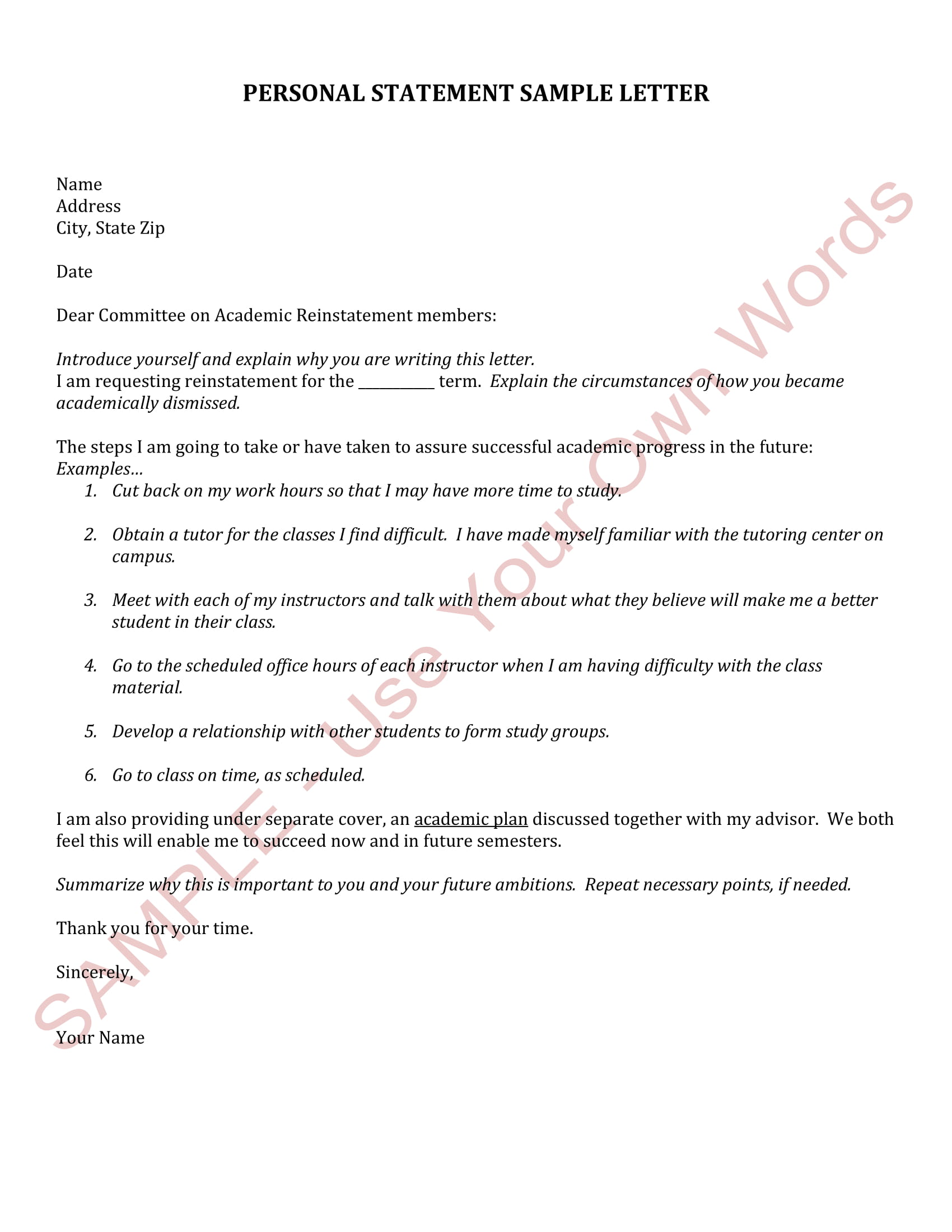
Download
Statement Letter for Non-Business Organizations Example
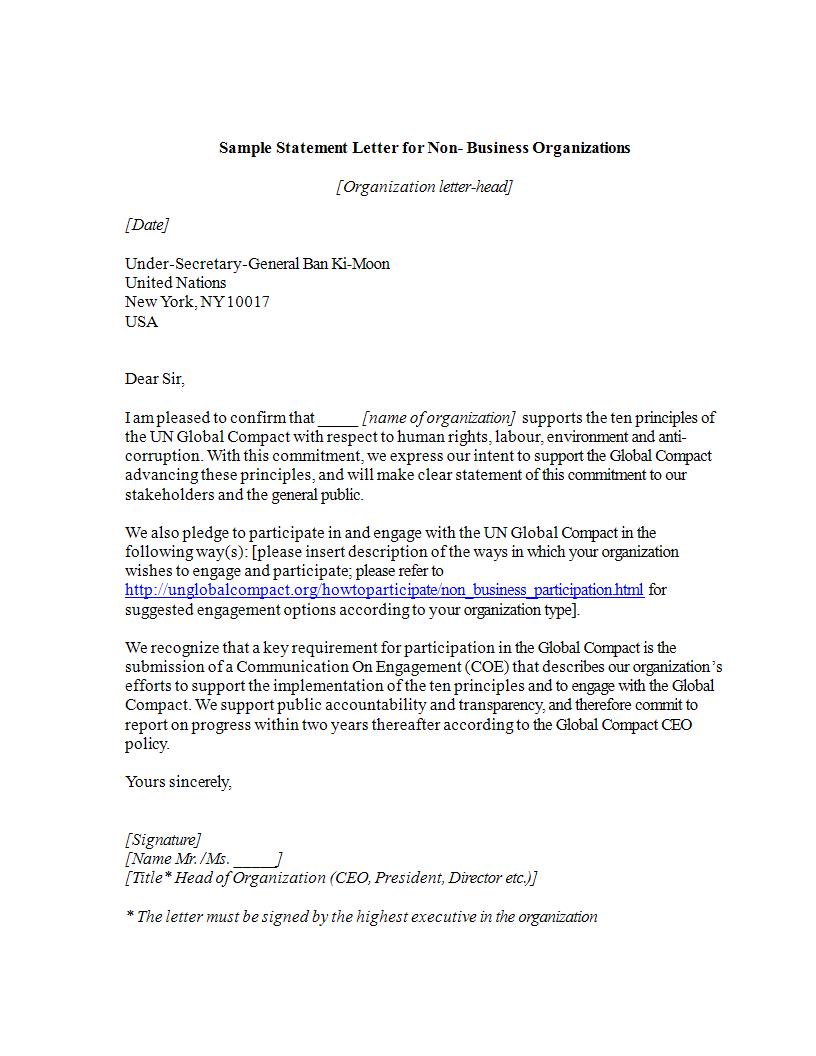
Statement of Appeal Letter Example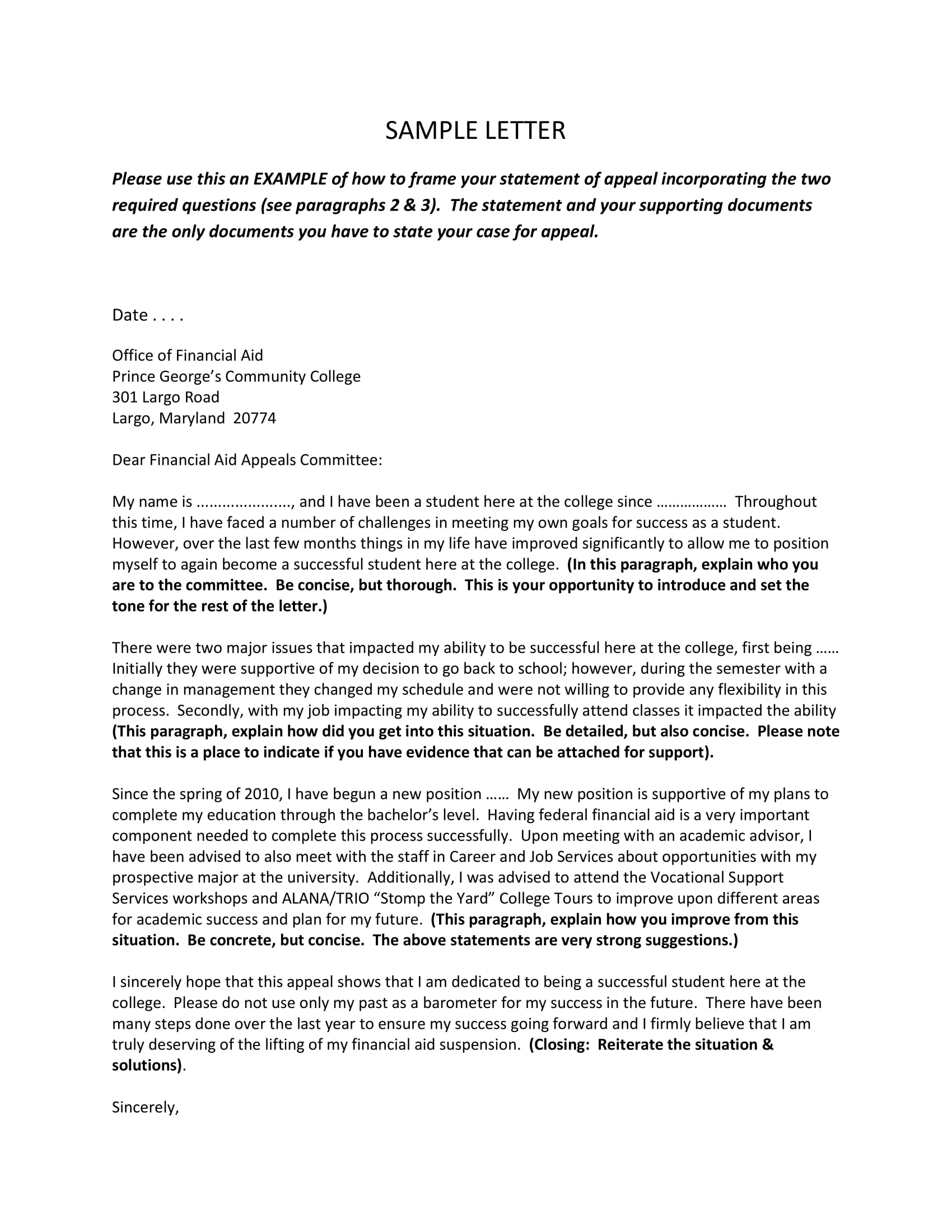
Download
Voluntary Statement Letter Format Example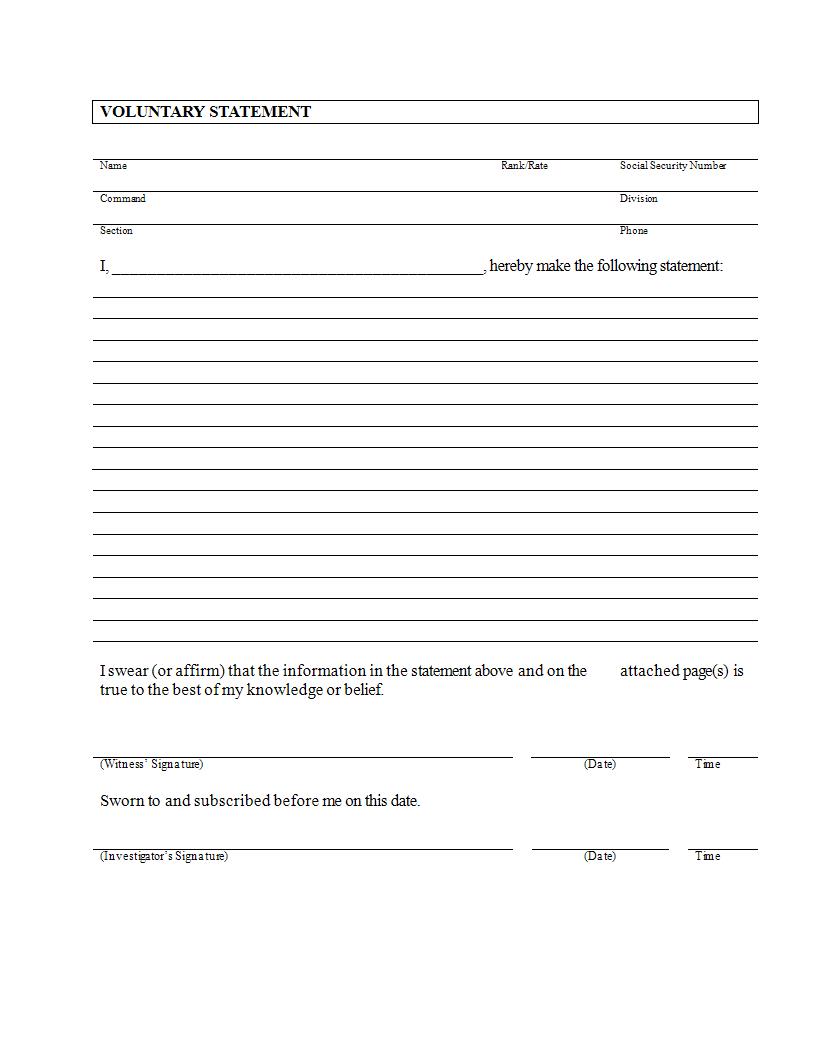
Download
Things to Keep in Mind
However, letters are not only limited to cover letters, complaint letters, sales letters, and so on. You can also write a letter to state important matters. When you hear a high-profile individual or a government office or official “release a statement,” you immediately think that the person or office issuing the statement addresses a specific issue or topic. On the other hand, a statement letter works the same way; it addresses an issue or subject directly, but it follows the format of a letter.
Statement letters often referred to as information letters or letters of transmittal, are letters that convey information about a change in policy or procedure. This is quite commonly written by managers, supervisors, or any executive officials of the company or organization to address changes within the company or organization or any other matters that concern the company as a whole. These letters also have a matter-of-fact tone in them, meaning they usually don’t merit discussion or debate. Regardless of that, it is still important because it keeps everyone in the loop of what is currently happening.
Payoff Statement Letter Example
Download
Bank Statement Example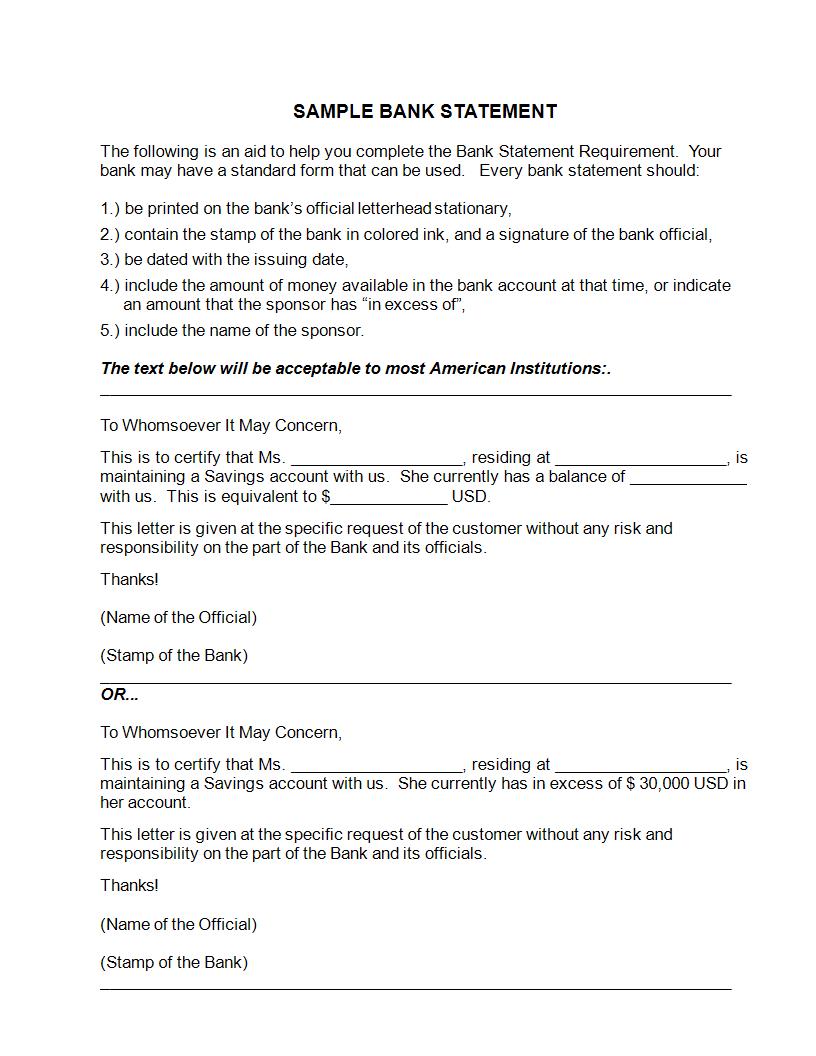
Download
Research Statement Letter Example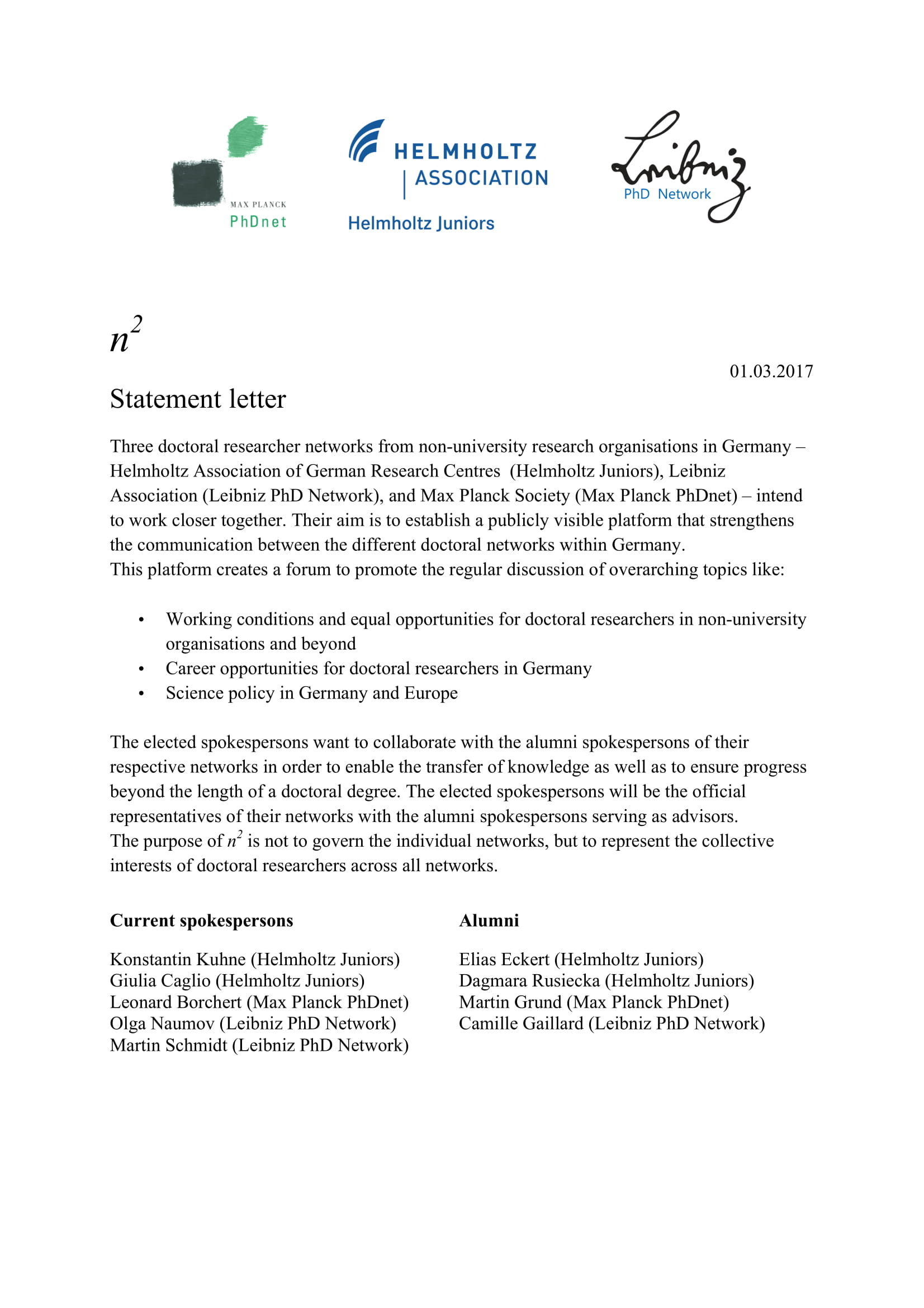
Download
Physician’s Statement Letter Format Example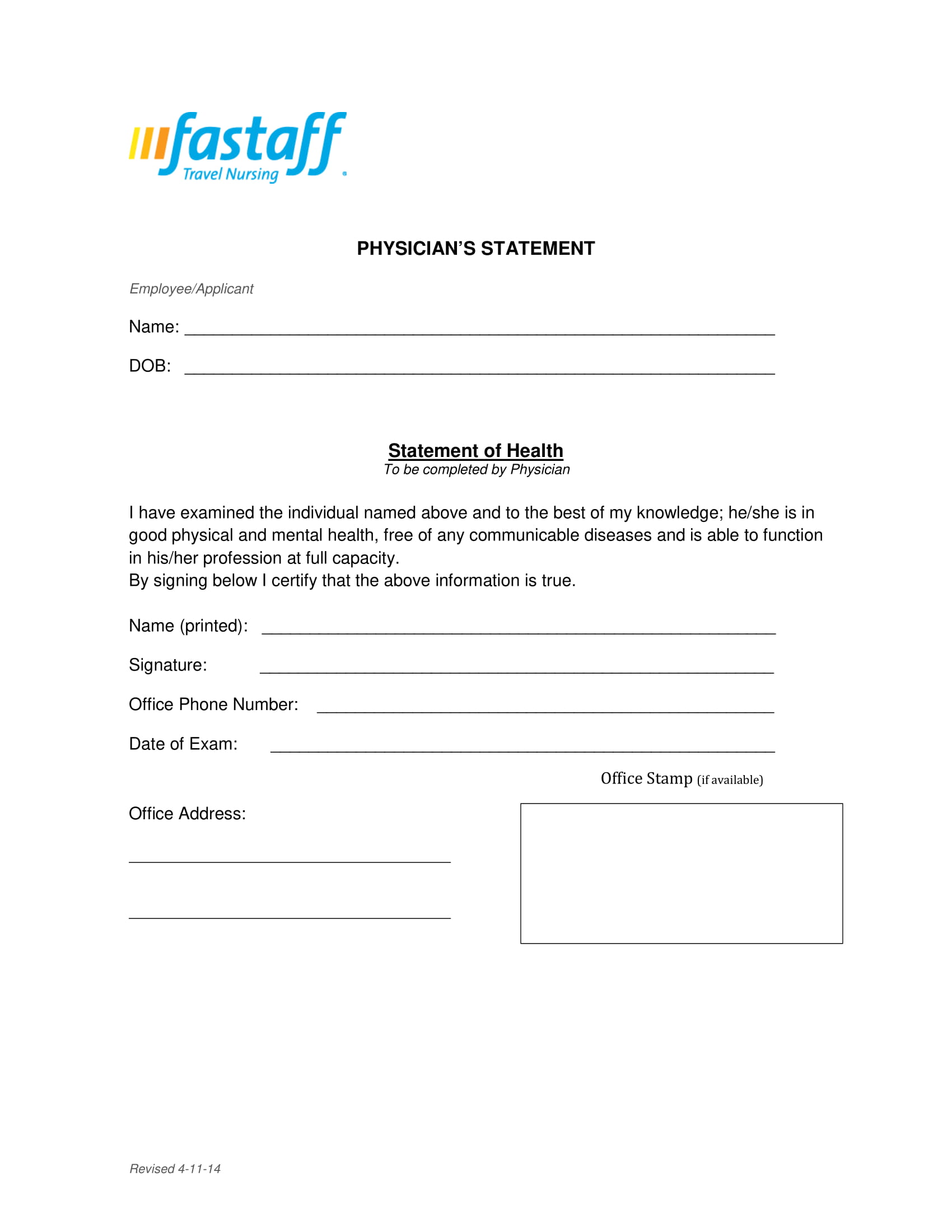
Download
Allergen Statement Letter Example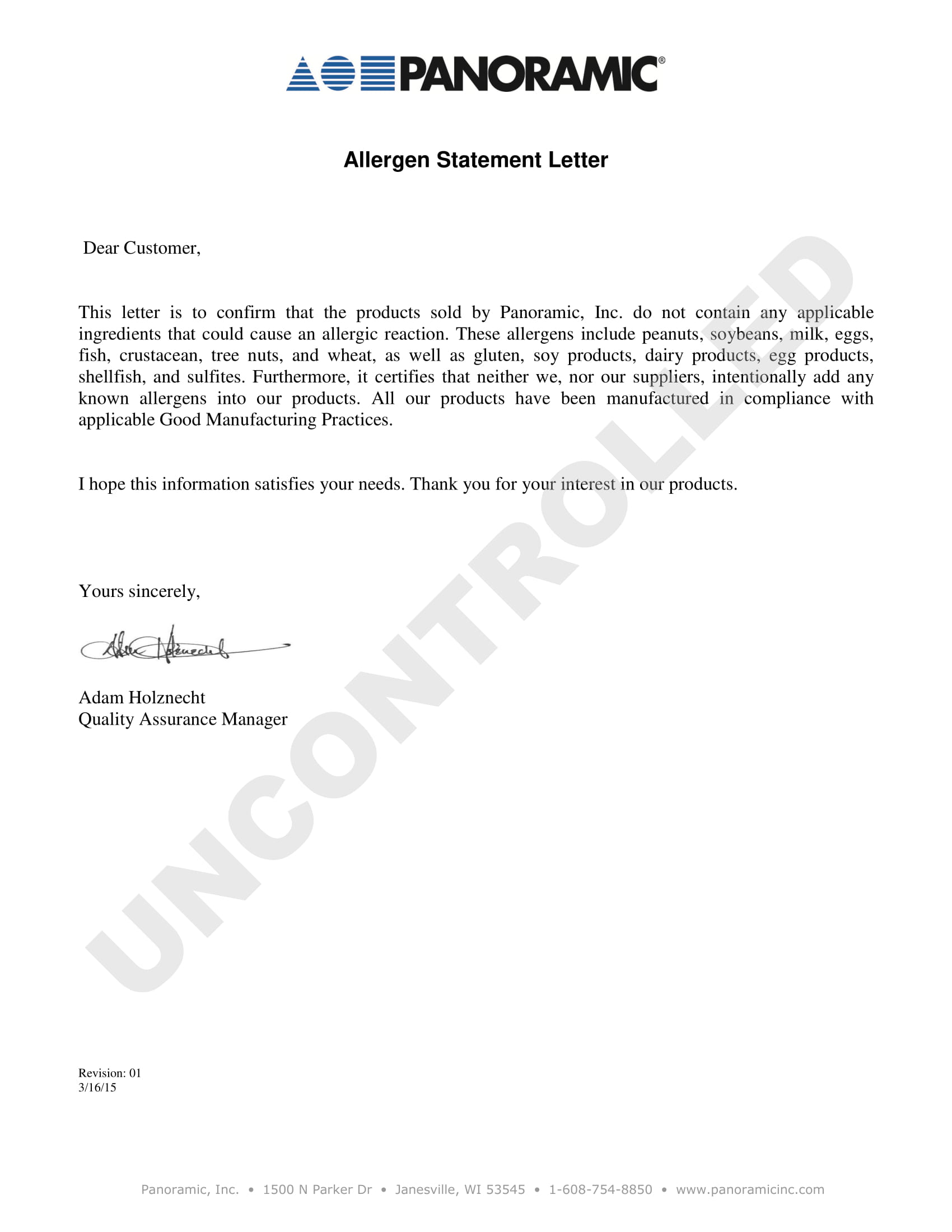
Download
Statement of Service Letter Template Example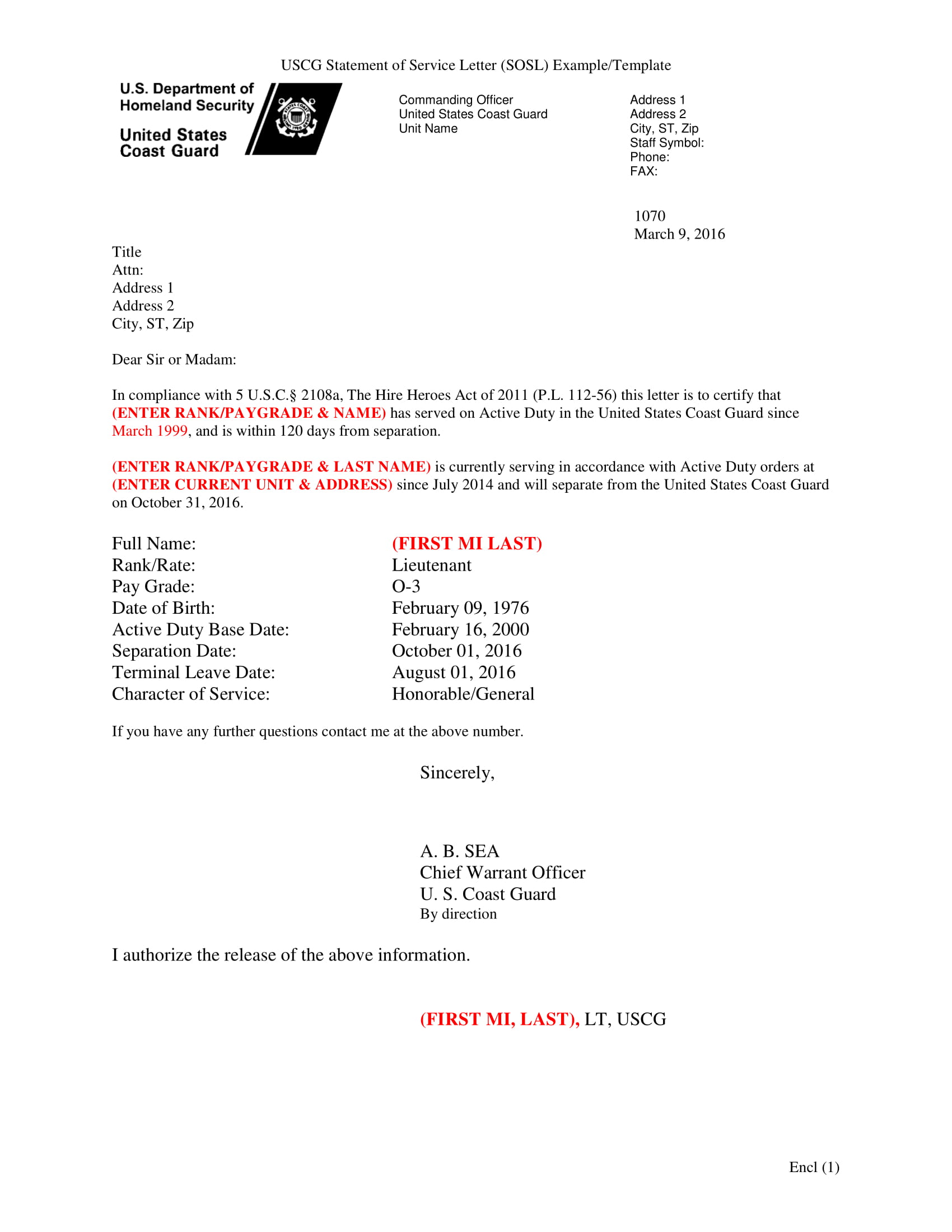
Download
How to Write an Official Statement Letter
A statement letter is considered a formal business letter, therefore, it should follow the standard format of a formal or business letter. In case you have forgotten how to do it, here is an easy guide in writing an official statement letter:
1. Use formal letterhead
Since this is a letter, it is very necessary to indicate your information as the sender. Although a return address is quite common for letters, it is easier for the reader to read your contact information since it is conveniently placed at the topmost part of the letter. Your letterhead must contain company contact information such as building/physical address, email address, telephone number, etc. It is also quite common for the letterhead to include the company logo.
2. Indicate necessary contact information of the receiver
In a formal letter structure or format, it is extremely necessary to include the contact information of your receiver. This part of the letter is also known as the inside address. It contains the name (if there is a specific receiver), address, and other relevant contact information such as email address and telephone number. However, if it is only intended for internal circulation, it is not necessary to include an inside address since you can immediately mention who the letter is for instead of an inside address or in the salutation.
3. Body of your letter
The body of your letter should consist of at least three parts: introduction, detailed supporting paragraph/s, and conclusion.
- Introduction – The introduction should immediately mention the purpose of the letter. The introduction should explain why the letter was written and why it is in circulation.
- Supporting Paragraph/s – The next paragraph/s should support your statement in the introduction. Therefore, this paragraph should contain facts and relevant information about the matter being discussed. At the same time, it should also expand on the topic so that there is no room for miscommunication.
- Conclusion – Your conclusion should ultimately make what you have discussed clearer. This means that in your conclusion, you can reiterate your statement and include a call to action; for example, you can say, “Should there be more questions keep in touch with the…”
4. Close the letter
The closing of your letter consists of the complimentary close like Sincerely, Respectfully, Truly Yours, etc. After the complimentary close, a signature line should be indicated. The signature line should include the name of the signing authority along with the designation or position in the company or organization. Remember that affixing the signature is very necessary as it affirms the legitimacy of the letter.
Advantages and Disadvantages of Written Communication
However, there are people who have completely gone digital and have avoided writing letters. But why? To understand it more, here are the advantages and disadvantages of written communication:
Advantages
- It is easy to record and preserve.
- It can be kept as a permanent record.
- Complex matters can be easily discussed.
- Prevents wastage of time and money.
- It provides an accurate presentation of information and data.
- It can be used as a reference.
- It can be easily verified.
- It helps in delegating authority.
- There are less distortion and less misinterpretation.
- It can help maintain the image of the sender and receiver.
Disadvantages
- It can be quite expensive.
- It consumes more time.
- It takes more time for approval.
- There is difficulty in maintaining secrecy.
- There is a delay in response and decision-making.
- A difficult choice of words cannot be explained further.
- It is difficult and expensive to keep all the records in written communication.
- It can be difficult to establish a direct relation between writer and reader.
- There is a lack of quick clarification and correction.
As you may know by now, written communication is still prevalent most especially in the corporate world. Although there is a fast-paced advancement in technology, written communication is still very much preferred. Take a look at the letter of intent on the internet for more.
Tips in Writing an Official Statement Letter
Just like any letter writing tasks, you need to be able to clearly and directly convey your message. Listed below are some useful tips you can use as a guide in writing an official statement letter:
- Be direct. There is no need for extra sentences and fillers.
- Write succinctly, meaning you should be brief.
- Provide necessary data and supporting details to make it clearer.
- Use easy to understand words. If there is a need to use technical terms, explain them briefly.
- Be accurate and factual.
- Provide a call-to-action, should it be necessary.
- Proofread and edit. If necessary, get the right approval before printing and circulating.
We hope that you find this guide informative and useful; the given examples are for your inspiration and usage.
FAQs
1. What is a Statement Letter?
Statement letters are often referred to as information letters. They are letters that convey information about changes in any policy or procedure in a company. These letters do not discuss or debate merit. They are used to make sure that everyone knows what policies are in place and what has been changed.
2. Why is a Statement Letter used?
A statement letter is used to state simple statements that convey crucial information. This could be about changes in policy or rules and regulations at the workplace. Such statements tend to be shallow, meaning they don’t really justify a debate. A statement letter must be professional and in an engaging tone.
3. What are the key elements of a Statement Letter?
The four main key elements of a statement letter as mentioned below:
- A clear connection between your goals and interests
- Any proof of past experiences and success of the company
- Interests that fit with the present program
- String writing, so that you can engage your readers in reading the letter completely.
4. How do you end an Official Statement Letter?
Your official statement letter consists of a respectful close like “truly yours”, “respectfully”, etc. After the close, a signature line must be mentioned. This line should include the name of the signing authority and their designation/position in the company. Attaching the signature is crucial as it declares that the letter is legitimate.
5. What must be followed while making an Official Statement Letter?
The following details must be followed while making an official statement letter of your own:
- Be straightforward
- Your writing must be brief
- Provide only the information that needs to be present in the letter
- Be accurate and only present facts
- Use understandable language
- Provide a call-to-action, if needed
- Proofread and edit whenever necessary.


